
When we compare our living conditions today to the living conditions 50 years ago, we can see undeniable improvements. These improvements are seen through the developments in technology and medicine that have democratized the access to medical care and consequently helped extend the human life expectancy. In fact, according to the United Nations the global average life expectancy in 2019 was at 72.6 years which was an unreachable number in any country back in 1950. Furthermore, we are more connected than ever and have access to a seemingly infinite amount of knowledge by means of the internet. It is also possible today to experience and see all the different cultures (contemporary and historical) around the world, and travelling has become accessible and easy.
The above representation of our modern world makes us think that the industrial and technological revolutions we experienced are getting us closer to living in a utopia. However, this statement is far from the truth, although the development we experienced has played a major role in getting the poverty rate down and the life expectancy up, has democratized education and access to the basic needs such as water and food; we came to understand that this development was not all for the better and that certain aspects of our life and our world took a turn for the worst. One of the major costs of this development is climate change. Climate change is defined as a long-term shift in temperature and weather in a specific region or on a global scale. One of the major aspects of climate change is global warming. The collected data form various sources all show that the earth’s temperature is warming. Below are two maps that show the median average temperatures for the years 1970 and 2013.
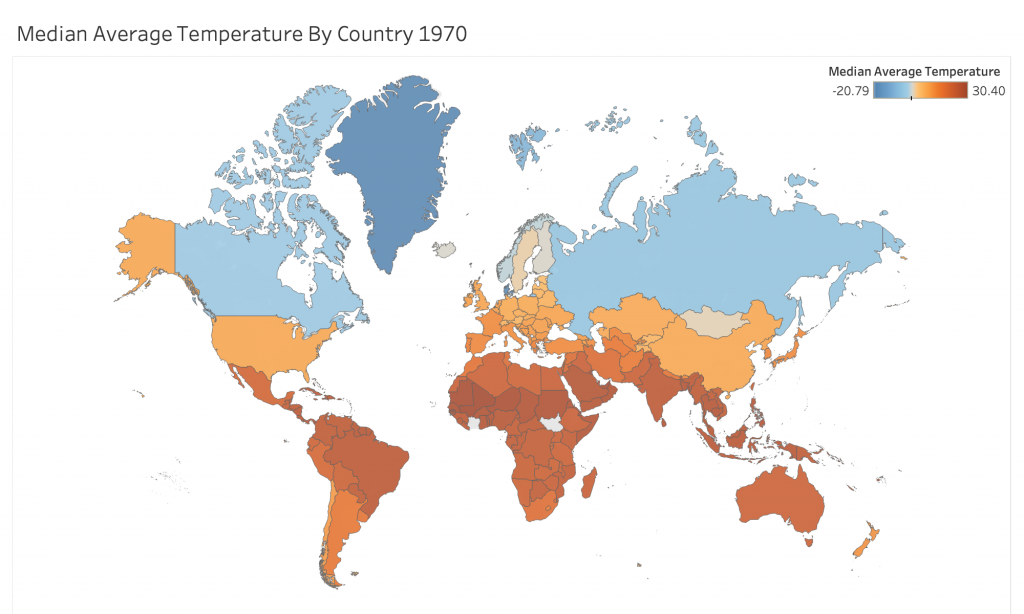
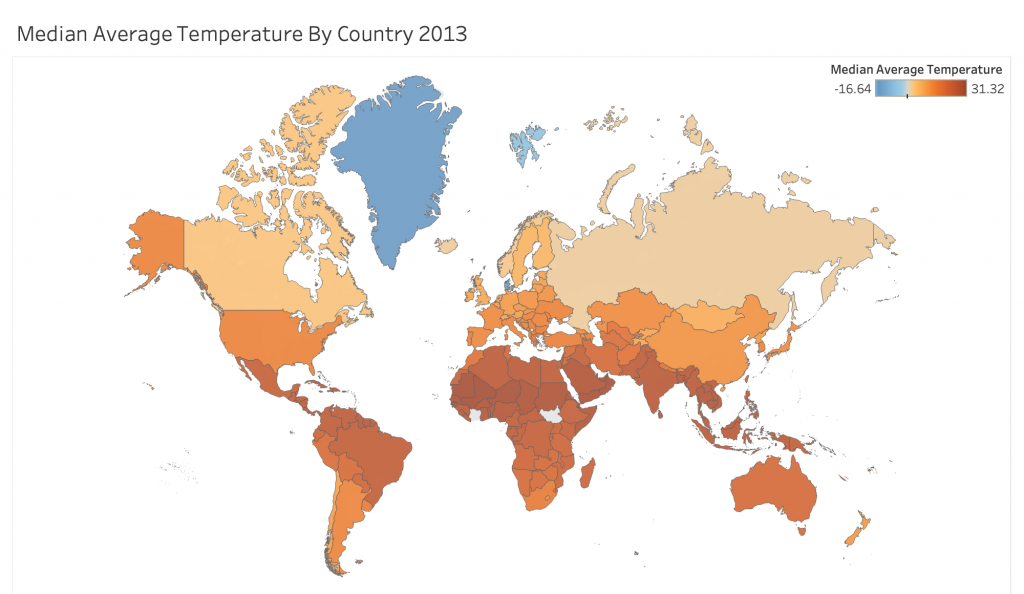
The change of colors between the 1970 map and the 2013 map is quite drastic, especially for the northern hemisphere. And while some regions are more affected than others, this phenomenon is affecting the planet as a whole, not just a handful of countries. Another interesting point of view concerning the visualization of the global warming phenomenon would be looking at the deviation of the global temperature relative to the median over the years starting from 1950 till 2016.
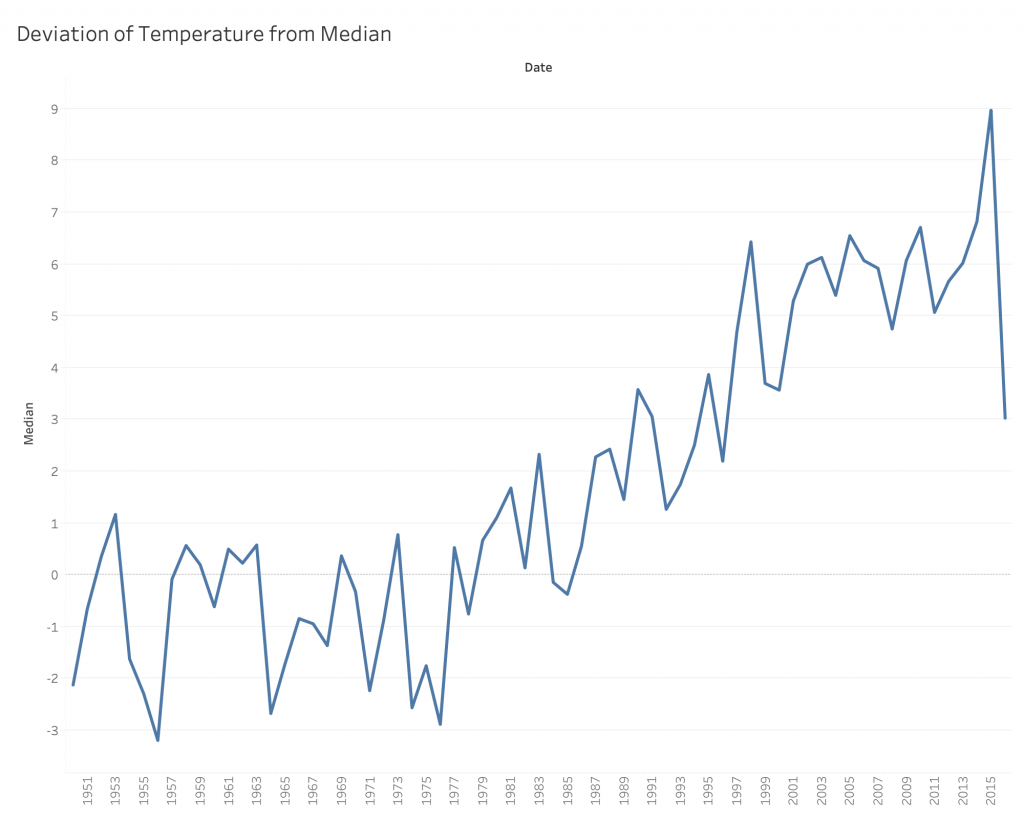
It is also evident from this chart that the earth is warming over the years, and that with time the pace at which it is warming has accelerated drastically.
The Main Causes
The main reason behind climate change is the emission of greenhouse gasses, the most prominent of which is CO2. Below is a graph illustrating the evolution of CO2 emissions in metric tons of CO2 between 1850 and 2014.
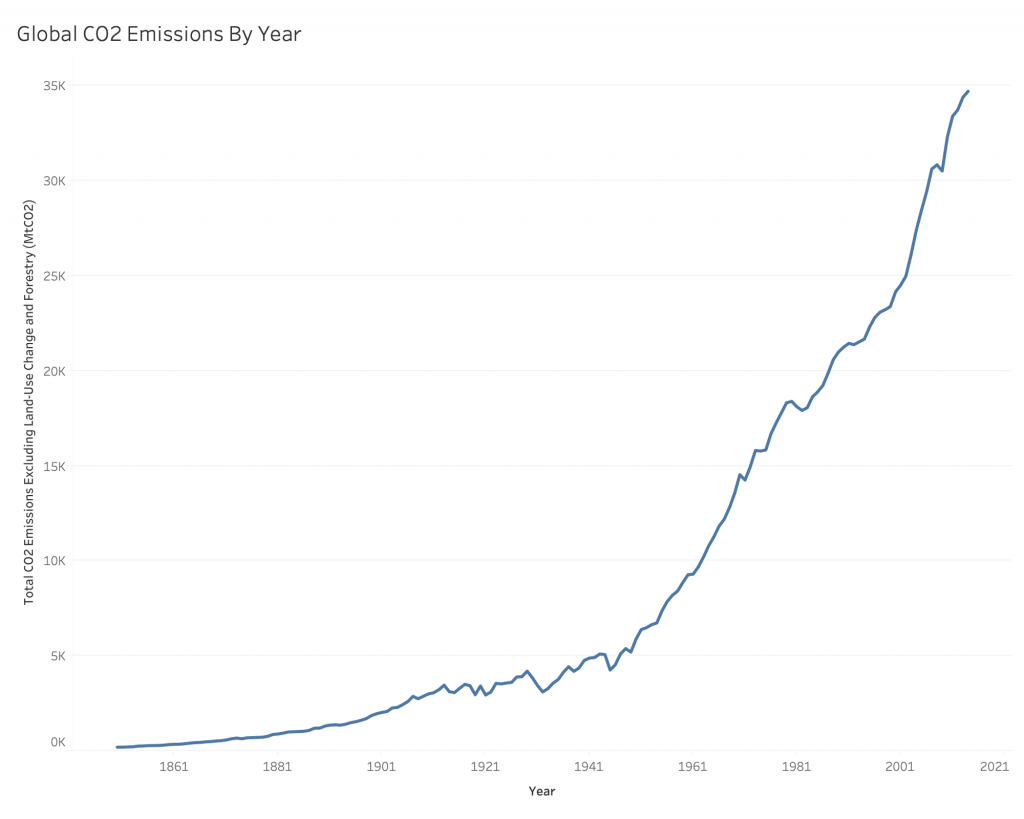
However, these emissions are not distributed uniformly on all the countries as it is seen by the map below.

Let’s have a closer look at the industries that are responsible for these emissions.
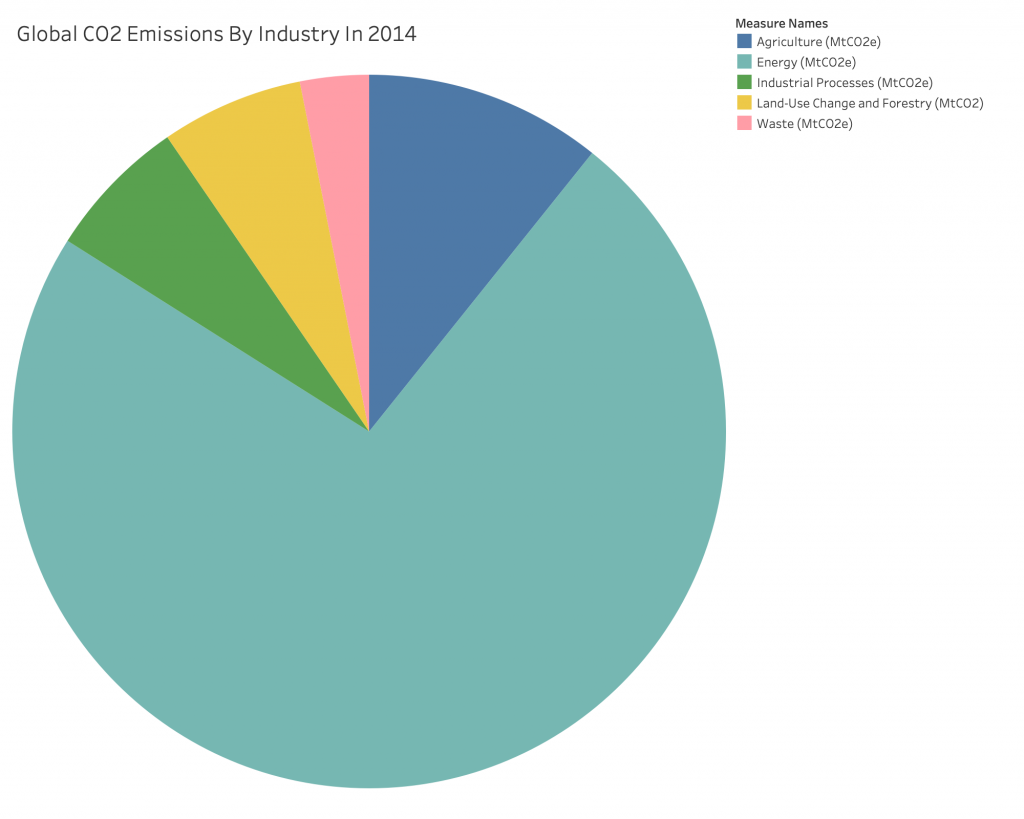
It is very clear that the main contributor is the energy sector since the major source of energy worldwide is the burning of fossil fuels. We can clearly see from the map representing the CO2 emissions by country that the two major emitters of CO2 are in order China and the United States of America. However, their emissions aggravate the global warming process on the scale of the whole world, this means that the problem of climate change cannot be addressed as an individual issue by countries, but it has to be met with global action. A closer look into the source of these emissions in each of these country shows us a very similar division of the CO2 emissions with the energy sector still being the major contributor.
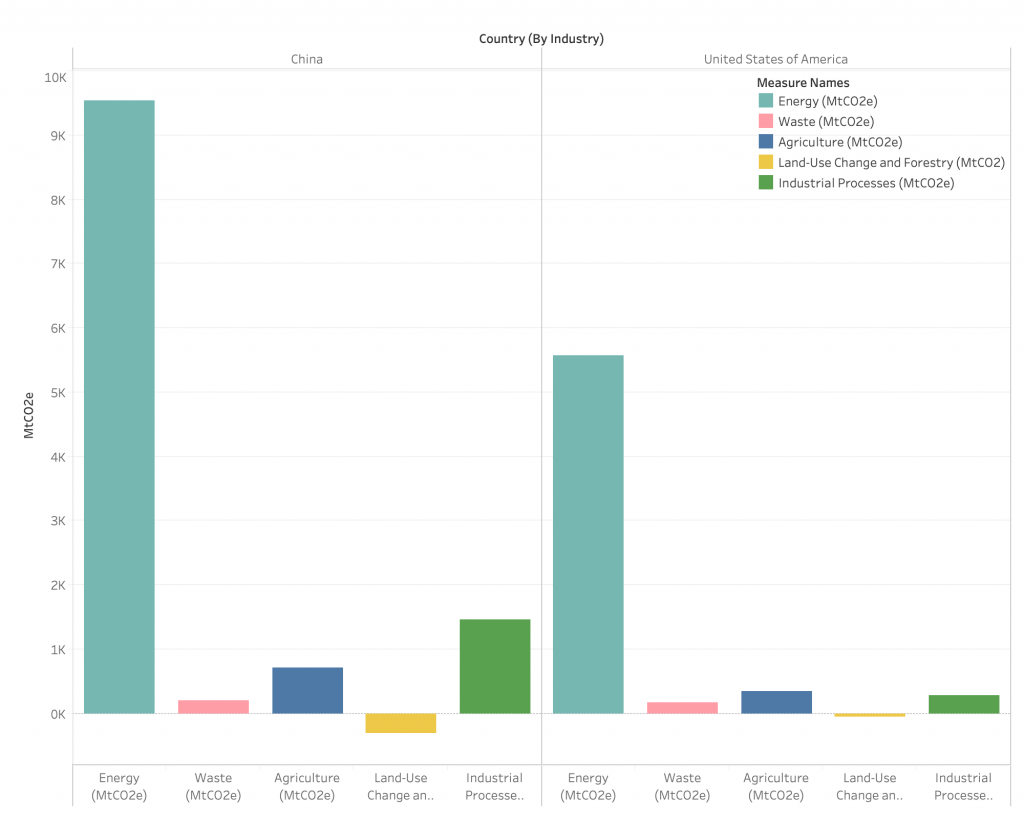
CAIT Climate Data Explorer. 2017. Washington, DC: World Resources Institute. Available online at: http://cait.wri.org
The Repercussions
Now that we have an idea about the main cause of climate change, it is time we took a look at its effects. First, the heating of the land surfaces is causing an expansion in deserts and the increase in the number of heat waves and wildfires experienced around the world, this can be felt in Australia, California and even in Lebanon. The increase in temperature is also causing droughts and lack of water is certain regions, this threatens, along with the worsening weather conditions, the food supply chain. The rising temperature are also causing the permafrost and ice to melt in the arctic region which in its turn causes a rise in water levels
The rise in air pollution is causing the air quality to deteriorate, especially in cities, which can be the cause of a spike in diseases such as lung cancer. The rise in CO2 levels is also causing the oceans to become more acidic since they absorb 30% if the carbon dioxide that is released in the air, this phenomenon is adversely affecting marine life.
Additionally, climate change is a danger on the whole ecosystem, especially the wildlife, some species can no longer survive in our heavily polluted world. For example, arctic creatures such as polar bears are threatened because their home is melting away, and coral reefs are in danger because of the deterioration of the oceans.
Most of the world understood the threat that global warming poses on life as we know it and they decided to meet in 2016 in Paris, France and signed the Paris Agreement whose primordial objective is the reduction of greenhouse-gas emissions. Its main objective is to hold the increase of temperature below 2°C above pre-industrial levels and to ultimately limit it to 1.5°C. Currently the agreement includes the European Union and 194 states. This includes China and India, which are respectively the largest and third largest emitters of CO2. However, the United-States of America withdrew from the Paris Agreement on the 4th of November 2019 without facing any repercussions.
In addition to that, the countries that signed the agreement are not committing enough to it despite the fact that the agreement in itself is underwhelming and insufficient to deal with the current climate crisis.
This is why, it is necessary to take the issue more seriously and to renegotiate the Paris Agreement or come up with a new and improved one that has more ambitious objectives and that has incentives that push the countries to comply with it, since a non-complying country in the Paris Agreement faces no punishment for its actions.
Climate change is the most important problem we have ever faced, if no appropriate global actions are taken to face it, it will become worse and worse until life as we know it is no longer possible. The severity of this problem was acknowledged by many institutions and activists including the United Nations, The World Health Organisation and the International Federation of Red Cross and Red Crescent Societies.
Acting now, although late is necessary because the more we wait the harder the sacrifices we will have to make. As the Chinese proverb says « The best time to plant a tree was 20 years ago. The second best time is now ».
